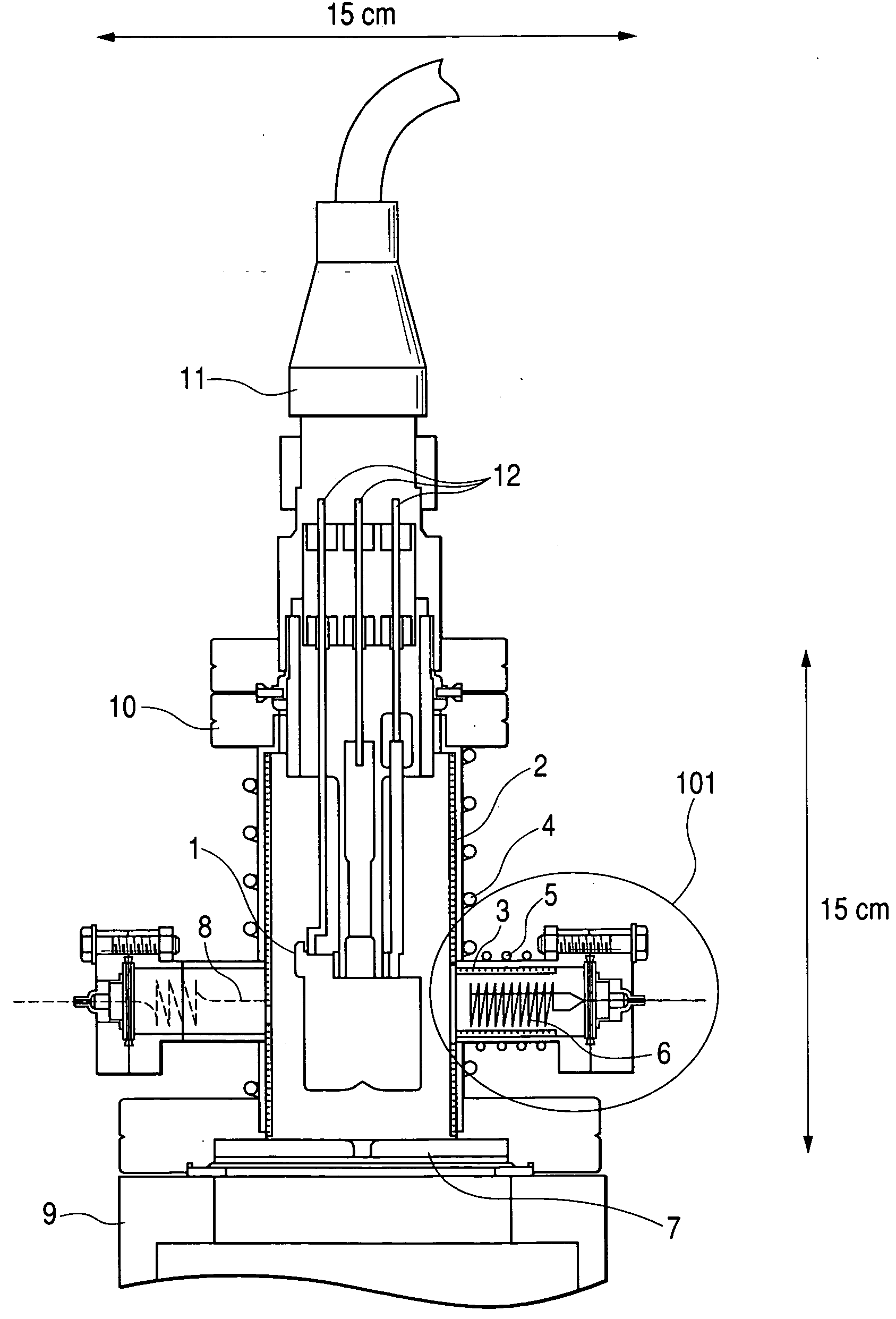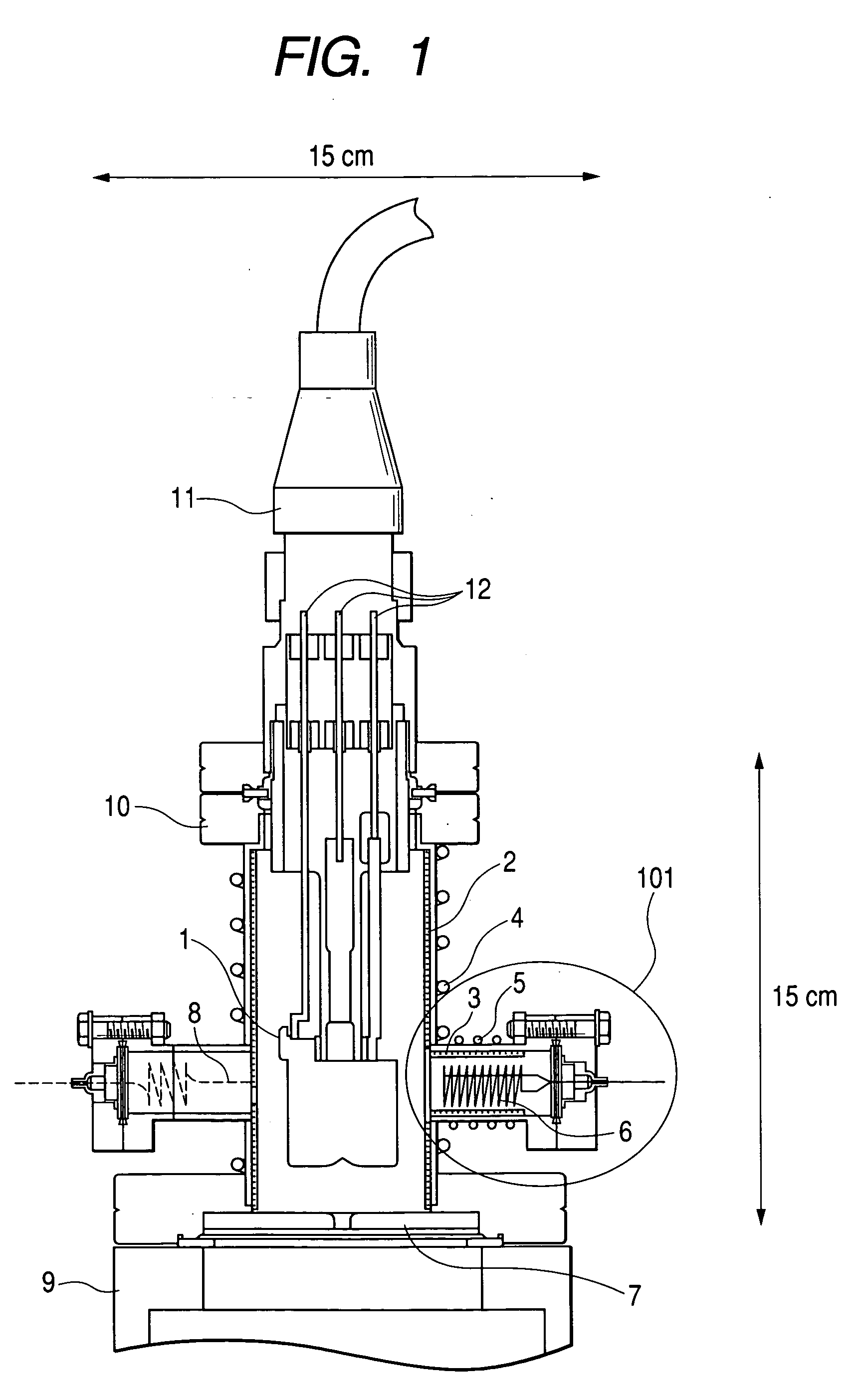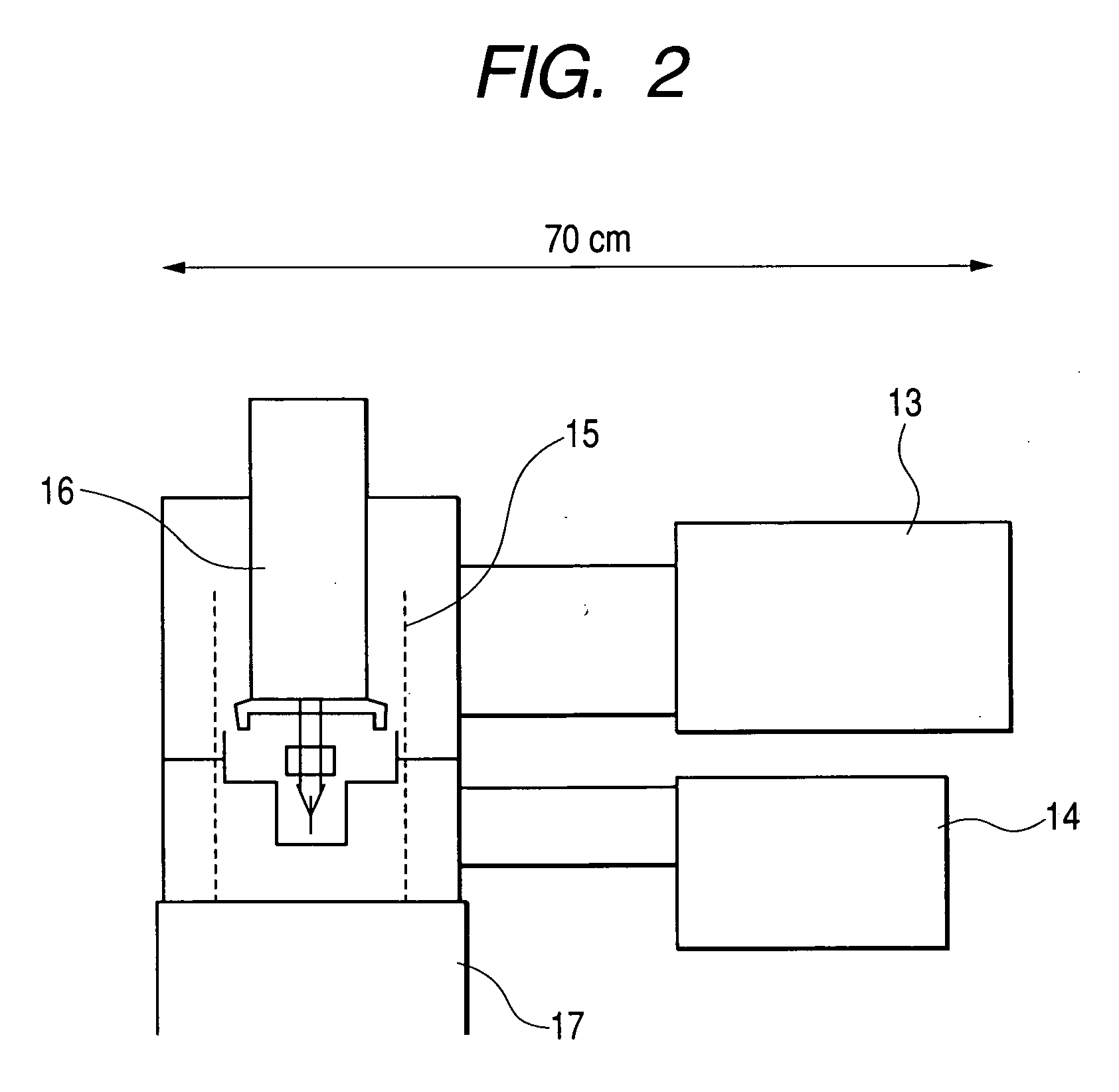Small electron gun
a small electron gun and electron gun technology, applied in the field of electron gun, can solve the problems of inability to substantially keep a high vacuum pressure, limit in downsizing the ion pump, and difficulty in downsizing the ion pump, and achieve the effect of high vacuum pressur
- Summary
- Abstract
- Description
- Claims
- Application Information
AI Technical Summary
Benefits of technology
Problems solved by technology
Method used
Image
Examples
first embodiment
[0033] First Embodiment
[0034]FIG. 1 shows a configuration of an electron gun of this embodiment. An electron source uses a thermal-field-emission electron gun (TFE) 1. The electron source 1 is set to the flange of an ICF 70 [WHAT IS “ICF 70”→It's a standard of flange used in a vacuum industry] and connected with an introduction terminal 12 to an electrode (suppressor, drawer, or chip) (not shown). The electron source 1 is inserted into and fixed to an electron-gun column 10.
[0035] The inside diameter of this column is approximately 37 mm. The column 10 has a sheeted nonevaporative getter pump 2 along the inside diameter. The nonevaporative getter pump 2 is activated when overheated to take in air. Therefore, a first heater 4 is set to the outside of the electron-gun column 10. This embodiment uses the heater 4 by winding a sheath heater on the electron-gun column 10. Note that a nonevaporative getter-pump heating device may be set in the vacuum vessel, in other words, the electron-...
second embodiment
[0044] Second Embodiment
[0045] This embodiment describes the electron gun, described in the first embodiment, as applied to a scanning electron microscope.
[0046]FIG. 3 shows a schematic configuration of the scanning electron microscope of this embodiment. From the viewpoint of being advantageous for downsizing, every electronic optical system used in this embodiment uses a small electronic optical system constituted by an electrostatic lens. In FIG. 3, an electron beam 18 field-emitted from a field-emission electron gun 17 is thinly converged by electric fields formed between electrodes of an electrostatic lens set below the electron gun 17 and applied onto a sample 25. The electrostatic lens comprises a third lens electrode 19, a second lens electrode 20, and a first lens electrode 21.
[0047] At the same time, the electron beam 18 is deflected in the internal space of the second lens electrode 20 by a deflector 24 to two-dimensionally scan the surface of the sample 25. Moreover, t...
third embodiment
[0053] Third Embodiment
[0054] This embodiment describes the electron gun, described in the first embodiment, as applied to an electron-beam drawing apparatus. To provide a pattern drawing function for the small scanning electron microscope described in the second embodiment, the microscope may be used as an electron-beam drawing apparatus.
[0055]FIG. 4 is a schematic diagram of an electron-beam drawing apparatus of the third embodiment. It is possible to draw a pattern having a resolution of 6 nm on a resist film applied onto a sample 31 by sequentially reading data from a pattern record control device 30, previously storing the data for the layout of a pattern and the like, and deflecting an electron beam 18 by a deflector 24 so as to form the pattern. Moreover, it is possible to detect the position of a pattern to be drawn by detecting a secondary electron beam 33 generated from a region nearby a positioning mark, not shown, by a secondary electron detector 26. Because this embodi...
PUM
 Login to View More
Login to View More Abstract
Description
Claims
Application Information
 Login to View More
Login to View More - R&D
- Intellectual Property
- Life Sciences
- Materials
- Tech Scout
- Unparalleled Data Quality
- Higher Quality Content
- 60% Fewer Hallucinations
Browse by: Latest US Patents, China's latest patents, Technical Efficacy Thesaurus, Application Domain, Technology Topic, Popular Technical Reports.
© 2025 PatSnap. All rights reserved.Legal|Privacy policy|Modern Slavery Act Transparency Statement|Sitemap|About US| Contact US: help@patsnap.com



